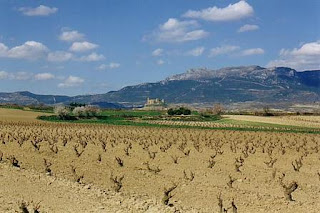 The Shoalhaven Coast wine region stretches from near Kiama in the north to Batemans Bay in the south and west to the escarpment. It is part of the South Coast Wine Zone, a much bigger area, extending from Lake Macquarie to the Victorian border and west to the Great Diving Range.
The Shoalhaven Coast wine region stretches from near Kiama in the north to Batemans Bay in the south and west to the escarpment. It is part of the South Coast Wine Zone, a much bigger area, extending from Lake Macquarie to the Victorian border and west to the Great Diving Range.A designated wine region is a legal entity under government legislation similar to the Appellation system in France. However it is much less restrictive than the French system in terms of viticultural and winemaking practices. In fact the only restriction is that wine which carries the regional name must consist of a minimum of 85% of fruit from that region. This protects the integrity of the label and safeguards the consumer.
To be assigned a GI ( Geographical Indication) the application has to prove that the whole area concerned has certain similar climatic, geographical and geological conditions. To some this might be considered the "terroir" of the area.
The Shoalhaven Coast is subjected to a warm maritime climate which is probably one of the most difficult climates to grow grapes in. It means hot and wet summers which encourage fast ripening, dilution of grape sugar, reduction of varietal character, low grape acidity and, worst of all, increased threat of disease particularly downy and powdery mildews and botrytis.
Of course a good viticulturalist manages his/her vineyard as best as possible to minimise the impact of the climate. Vine rows are designed to be well ventilated by the prevailing winds to help them dry out and the canopies are usually trained to vertical shoot positioning (VSP) with well spaced spurs for similar reasons. Most vineyards are well drained.
A protective spray programme is also essential to limit the impact of disease.
The Shoalhaven Coast is subjected to a warm maritime climate which is probably one of the most difficult climates to grow grapes in. It means hot and wet summers which encourage fast ripening, dilution of grape sugar, reduction of varietal character, low grape acidity and, worst of all, increased threat of disease particularly downy and powdery mildews and botrytis.
Of course a good viticulturalist manages his/her vineyard as best as possible to minimise the impact of the climate. Vine rows are designed to be well ventilated by the prevailing winds to help them dry out and the canopies are usually trained to vertical shoot positioning (VSP) with well spaced spurs for similar reasons. Most vineyards are well drained.
A protective spray programme is also essential to limit the impact of disease.

Of course variety selection is also important.
No one (well, almost no one) would consider growing Pinot Noir or Riesling, distinctly cool climate varieties, in the area.
White varieties Semillon, Verdelho, Chardonnay and Sauvignon Blanc do reasonably well. The more unusual Arneis also looks promising. Reds such as Shiraz and Cabernet Sauvignon do ok too. There is also some Merlot and Cabernet Franc grown.
Chambourcin has also found a niche in the area. This is an unusual grape for Australia as it is a complex hybrid produced in France by Joannes Seyve. The grape’s parentage is unpublished but would be based on considerable number of American species of Vitis and the European Vitis vinifera.
The variety shows excellent disease resistance and has found a home wherever a warm humid climate makes conditions a little more difficult for growing grapes eg. the Shoalhaven!
The wines made from this grape show good colour, acidity, tannin and no unpleasant hybrid flavour.
It is also very versatile. Wineries in the Shoalhaven Coast make dry and sweet red wines, sparkling reds, rose’ and vintage ports from this grape.
In the 2008 South Coast Wine Show wines in the Chambourcin class won four bronze medals.
The variety shows excellent disease resistance and has found a home wherever a warm humid climate makes conditions a little more difficult for growing grapes eg. the Shoalhaven!
The wines made from this grape show good colour, acidity, tannin and no unpleasant hybrid flavour.
It is also very versatile. Wineries in the Shoalhaven Coast make dry and sweet red wines, sparkling reds, rose’ and vintage ports from this grape.
In the 2008 South Coast Wine Show wines in the Chambourcin class won four bronze medals.
They are an active group promoting the region at every opportunity.
A major event is the Shoalhaven Coast Wine Festival which takes place every Queen's birthday long weekend in June.
Not only is there wine tasting but entertainment, art and photographic exhibitions and food events also take place.
We hope to see as many of you as possible enjoying South Coast hospitality over those three days.

















